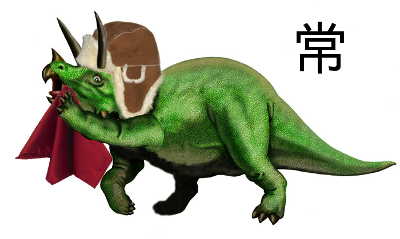漢字 — 100+

So, a mere 5% of Jōyō kanji made their way into my head — and it’s been fun so far, A LOT actually! :O
I can’t really say why exactly, but I guess first off because as I continue learning kanji I’m able to read more and more Japanese stuff and also because I can play around with mnemonics. :3
When I wrote about taking Japanese courses in my last post I was totally hyped. But in no way was I ready to get into kanji. I did a lot of preparation because the task seemed (and still seems) huge and I wanted to approach it in the best way possible.
I thought about learning the 214 radicals before looking at a single kanji, I looked at guides like TextFugu and WaniKani and started hoarding useful resources like Jim Breen’s Multi-Radical Selection …
… after about a month I knew how I would do it: TextFugu and the like present a great method for learning kanji effectively, but there are two problems. Frist they focus on kanji only and don’t present them in context, as compounds (afaik). Second and most imporantly, they use given mnemonics. No way in hell does it make sense to use other people’s associations to remember stuff. If 肉 for me consists of a large gripper and two people which reminds me of Soylent Green and makes it super easy to remember then why should I try to remember it any other way?
The thing with the official radicals is that sometimes they don’t make sense to me, and for a lot of graphemes of given kanji there are no radicals. I cannot remember 刂 as a mere variation of 刀 — they need very distinct mnemonic names/meanings or I’ll mix them up.
So … learning kanji for me works like this: I search for kanji made up of parts I already introduced to my mnemonic system that I’ll use in sentences a lot. If I find no good candidates, I search for new graphemes/parts that will “enable” useful new kanji. As a new useful kanji is found I try to find at least two ways to use it in sentences — one where a kun reading is used and one where an on reading is used. Super easy example: I know 田 and 力, now I find 男, super easy to remember and with 男の子 and 男子 I already have two readings involved. 男 with it’s readings, meanings and a mnemonic wind up in a json file from which I generate a web page displaying all my kanji with memonics and their parts/graphemes linked for ease of use. 男の子 and 男子 are fresh input for my kanji deck in Anki. In the following days I then try to use 男の子 and 男子 in homework for my Japanese courses and in journals on Lang-8. And that’s how it goes. :) Works really well so far and is a lot of fun. Coming up with good memonics and the populating of previously mentioned json file can be a bit tedious though. ^^
For the sake of documentation, these are the kanji I know so far.
And here are my current Anki stats (deck created 2013-05-21).
I plan to do this kind of review every 100 kanji, so there will — hopefully — be a total of 21 of these in the end. Beginning with the second one they’ll very likely be notably shorter. ^^
And that’s it. Learning kanji is now part of my [ladder to the sun][triceratops with a cap cleaning his mouth with a napkin] life. :3
2013-06-18